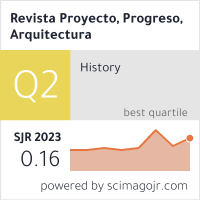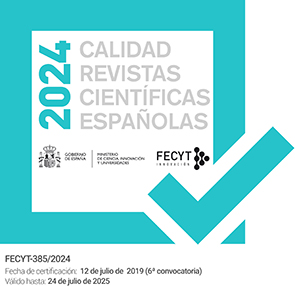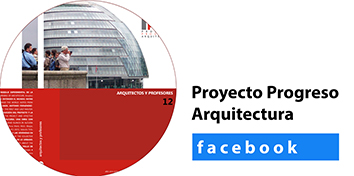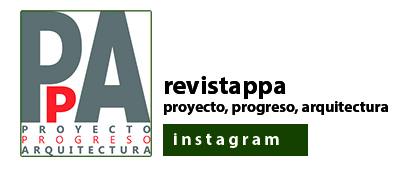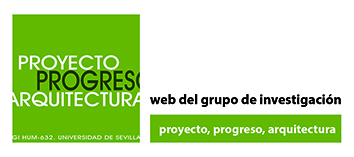LE CORBUSIER Y LOS EDIFICIOS DE GRAN ESCALA. DE LA COMPOSICIÓN POR ELEMENTOS A LA UNIDAD / Le Corbusier and the large scale buildings. From composition by elements to unity
DOI:
https://doi.org/10.12795/ppa.2014.i10.03Parole chiave:
Le Corbusier, grands travaux, composición, unidad, ciudad / Le Corbusier, composition, unity, city.Abstract
RESUMEN Los edificios de gran escala de Le Corbusier en los años 30 y 40 se caracterizan por una “composición elemental” de dos volúmenes de naturaleza opuesta: un volumen–tejido, flexible y adaptable, generado a partir de una labor de “textúrica” consistente en la repetición de un módulo espacial –y estructural–, y un volumen–caja, platónico y cerrado, a modo de un objeto–tipo que contiene un espacio único representativo.
Esta dualidad resuelve los dos deseos contradictorios entre los que se debate el arquitecto a la hora de definir la relación de estos proyectos con el contexto. Por un lado pretende que se adapten a las particularidades de cada emplazamiento manifestándose un elemento más de la totalidad urbana, pero por otro, desea destacarlos, demostrando su condición única y simbólica –en sentido clásico–.
Las soluciones adoptadas parecen decantarse progresivamente hacia una opción cada vez menos contextual, en favor de una mayor representatividad de estas arquitecturas. Esta determinación es ya más evidente en los proyectos realizados tras la Segunda Guerra Mundial, en los años 50 y 60, produciéndose como consecuencia una sustancial variación compositiva en los mismos. La elementalidad bipartita es definitivamente sustituida por una volumetría unitaria en la que, eso sí, se puede seguir reconociendo reminiscencias de la realidad dual descrita.
SUMMARY Le Corbusier’s large scale buildings of the 1930s and ’40s are characterised by an “elemental composition” of two opposed volumes of nature: a material-volume, flexible and adaptable, generated from a labour of “texturique”, a term used by the architect himself to define harmonic sizing from the metric units of the Modulor;and, a box-volume, Platonic and closed, as an object-type which contains a unique representative space.
This duality resolves the two contradictory desires between which the architect debatedwhen defining the relationship of these projects with the context. On the one hand he intended that they were adapted to the particularities of each situation, showing it as one more element of the unban whole, but on the other, he wanted to emphasise them, demonstrating their unique and symbolic condition, in the classical sense.
The solutions adopted appear to progressively opt for an increasingly less contextual option, in favour of a greater representation of these architectures. This decision is already more evident in the projects carried out after the Second World War, in the 1950s and ’60s, with a substantial, compositional variation being produced in them as a result. The bipartite elemental nature is definitely replaced by a unitary volumetric in which reminiscences of the described dual reality can still be recognised.
Downloads
Metriche
Riferimenti bibliografici
Ábalos, Iñaki et alt.: “Le Corbusier, naturaleza y paisaje”. En Calatrava, Juan (Ed.): Doblando el ángulo recto. 7 ensayos en torno a Le Corbusier. Madrid: Ediciones Arte y Estética, 2009.
Boesiger, Willy (Ed.): Le Corbusier Oeuvre complète. Volumen 1. 1910-29. 15ª ed. Basilea: Birkhäuser Publishers – París: Fondation Le Corbusier, 1999.
Boesiger, Willy (Ed.): Le Corbusier Oeuvre complète. Volumen 2. 1929-34. 14ª ed. Basilea: Birkhäuser Publishers – París: Fondation Le Corbusier, 1999.
Boesiger, Willy (Ed.): Le Corbusier Oeuvre complète. Volumen 5. 1946-52. 11ª ed. Basilea: Birkhäuser Publishers – París: Fondation Le Corbusier, 1999.
Borie, Alain et al.: La ville indienne de Le Corbusier. París: Somogy éditions d’art, 2002.
Capitel, Antón: La arquitectura compuesta por partes. Barcelona: Editorial Gustavo Gili, 2009.
Casali, Valerio et al.: Le Corbusier. Il programma liturgico. Bolonia: Editrice Compositori, 2001.
Colquhoun, Alan: Arquitectura moderna y cambio histórico. Barcelona: Editorial Gustavo Gili, 1978.
Colqhoun, Alan: Modernidad y tradición clásica. Madrid: Ediciones Júcar, 1991.
Colquhoun, Alan et al.: Le Corbusier. Madrid: Ministerio de Cultura. Dirección General de Bellas Artes y Archivos, 1987.
Cortés, Juan Antonio: Lecciones de equilibrio. Barcelona: Edición Fundación Caja de Arquitectos, 2006.
Frampton, Kenneth: “El otro Le Corbusier: la forma primitiva y la ciudad lineal, 1929-52”. En Arquitectura. “Le Corbusier”. Enero-Abril 1987, Nº 264-265. Madrid: Colegio Oficial de Arquitectos de Madrid. 1987. pp. 30-37.
Le Corbusier: El Modulor I y El Modulor II. 3ª ed. Barcelona: Editorial Poseidón, 1980.
Le Corbusier: La Ciudad del Futuro. 4ª ed. Buenos Aires: Ediciones Infinito, 2001.
Le Corbusier: L’atelier de la Recherche Patiente. París: Vincent Fréal, 1960.
Le Corbusier: Precisiones respecto a un estado de la arquitectura y el urbanismo. 1ª reed. Barcelona: Ediciones Apóstrofe. Colección Poseidón, 1999.
Loach, Judi: “Studio as laboratory”. En The Architectural Review. “Le Corbusier 100”. Enero 1987. Londres: Architectural Review. 1987. pp. 73-77.
Moneo, Rafael et al.: Sobre el concepto de tipo en arquitectura. Textos de Arquitectura. Madrid: Departamento de publicaciones de Arquitectura, 1991.
Scully, Vincent: Modern Architecture and other essays. Princenton: Princenton University Press, 2003.
Sekler, Eduard; Curtis, William: Le Corbusier at work. The génesis of the Carpenter Center. Cambridge: Harvard University Press, 1978.
Serenyi, Peter et al.: Le Corbusier. Essays. Princenton: Princenton University Press, 1987.
Tournier, Michel: El espejo de las ideas. 1ª ed. Barcelona: Editorial Acantilado, 2001.
Von Moos, Stanislaus: Le Corbusier, l’architect et son mythe. París: Editorial Horizons de France, 1971.
##submission.downloads##
Pubblicato
Come citare
Fascicolo
Sezione
Licenza
Las ediciones impresa y electrónica de esta Revista son editadas por el Secretariado de Publicaciones de la Universidad de Sevilla, siendo necesario citar la procedencia en cualquier reproducción parcial o total.
Salvo indicación contraria, todos los contenidos de la edición electrónica se distribuyen bajo una licencia de uso y distribución “Creative Commons Atribución-NoComercial-SinDerivar 4.0 Internacional” ![]() . Puede consultar desde aquí la versión informativa y el texto legal de la licencia. Esta circunstancia ha de hacerse constar expresamente de esta forma cuando sea necesario.
. Puede consultar desde aquí la versión informativa y el texto legal de la licencia. Esta circunstancia ha de hacerse constar expresamente de esta forma cuando sea necesario.
Los autores/as que publiquen en esta revista aceptan las siguientes condiciones:
- Los autores/as conservan los derechos de autor y ceden a la revista el derecho de la primera publicación, con el trabajo registrado con la licencia de atribución de Creative Commons, que permite a terceros utilizar lo publicado siempre que mencionen la autoría del trabajo y a la primera publicación en esta revista.
- Los autores/as pueden realizar otros acuerdos contractuales independientes y adicionales para la distribución no exclusiva de la versión del artículo publicado en esta revista (p. ej., incluirlo en un repositorio institucional o publicarlo en un libro) siempre que indiquen claramente que el trabajo se publicó por primera vez en esta revista.
- Se permite y recomienda a los autores/as a publicar su trabajo en Internet (por ejemplo en páginas institucionales o personales) antes y durante el proceso de revisión y publicación, ya que puede conducir a intercambios productivos y a una mayor y más rápida difusión del trabajo publicado (vea The Effect of Open Access).
- Abstract 1058
- ARTÍCULO (Español (España)) 528





